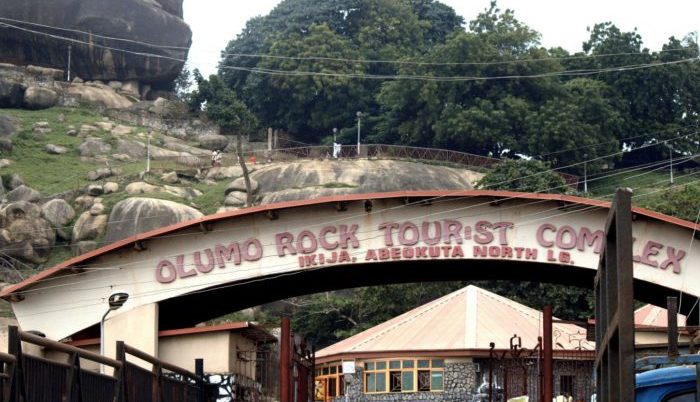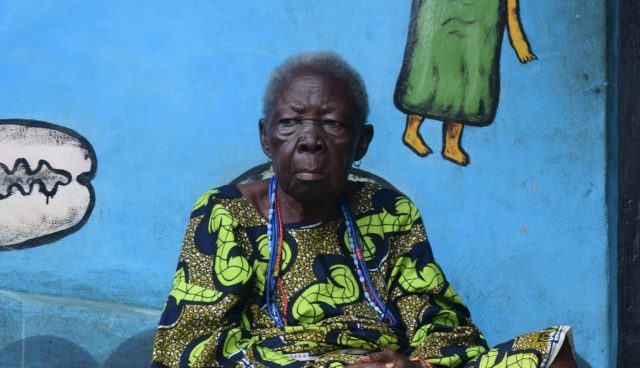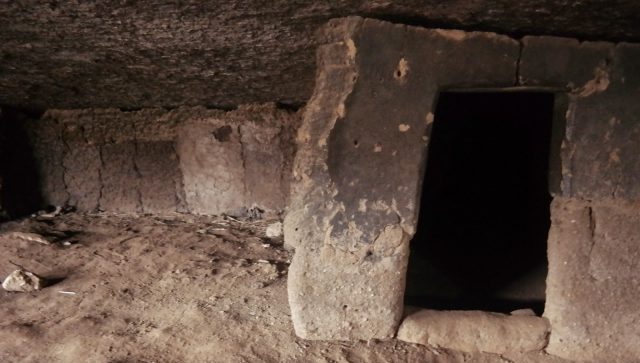In the 19th century in Abeokuta, Nigeria, Olumo rock became the hideout of Egba people who were seeking refuge during an inter-tribal war. The rock consists of many caves which were used by the people for both shelter and other communal activities. In modern time, the existence of the rock has been serving the role of a tourist centre which has attracted people from different parts of Nigeria and the world.
The rock which has a height of 137 metres above sea level may not be the only rock in Nigeria, but its historical marking will definitely stand the test of time. Also, its beauty, uniqueness, and many other features have placed it as one of Nigeria’s most historical sites
10 Less Known Facts About Olumo Rock

1. How The Olumo Rock Came Into Existence
When the war in the Oyo Empire broke, many of its residents went in search of refuge. It was at that time that a hunter, Adagba discovered the Olumu rock which many of Egba would use as a hideout.
Olumo means ‘troubles and sufferings are all over’ or ‘God has ended our troubles and sufferings. The rock became of great significance to Yoruba people and in its traditional religion, the patron of Olumo rock Orisha or Orisa who is still honoured.
2. A Muster Tree Has Been In Existence For Over 200 Years There
Surrounding the caves is a muster tree. The tree is said to have leaves that never shed and blossoms at any season.
3. The Rock Is Located At The Heart Of Abeokuta
Abeokuta which means under the rock is the capital of Ogun State. The rock is located in the heart of the city.
The rock became a tourist site in 1976 and was remodelled and commissioned in 2006 by former Nigeria’s President Olusegun Obasanjo.
4. Olumo Rock Could Produce Healing Water
The rock could produce water during the rainy season. The water was used by herbal doctors to cure sicknesses and diseases. Nevertheless, the rock stopped producing the water for about 5 decades now.
5. The Mother Goddess Of The Rock Lived In The Caves Almost All Her Life Of More Than A Century

Chief Mrs Sinatu Aduke Sanni is also known as Iya Orisa (mother goddess). She claimed to have lived under the rocks virtually all her life. Her news made headlines at the time she claimed she was 131 years old.
Although she said it was not easy at first, she believed in the gods of the cave and they protected her all through the time.
Furthermore, she grew up to witness the coronation of about 4 Alake of Egbaland (king of Egba).
6. The Rock Has Statutes Of Egba Past Hereos
The Olumo Rock has a status that constitutes statutes that represent past heroes and several other symbols of warriors of the land that consists of Ilesha Abi Agbongbakala, Agbabe, Okonkenu, and Jagun Jagun.
7. Human Sacrifices Were Made As Ritual Rites
In the past, human sacrifices were made annually as a thanksgiving to their gods.
In the modern age, these sacrifices of humans are replaced by animals and have continued to be in existence even to date. Currently, these sacrifices are made by the king of Egba land in an ancient shrine in the upper rock every year.
These sacrifices are said to protect both the people of Egba and visitors of the Rock.
8. There Are Different Routes That Can Be Used To Climb The Rock
There’s a rocky path that leads to the peak of the rock. This was initially the only path until stairs and elevators were introduced.
9. One Of The Chiefs Of Egba Land Was Buried Underneath The Mountain

In 1956 at the age of 122, one of the chiefs and all of the then king, Chief Sonni Osi-Toko died. He was then buried underneath the mountains.
10. The Women Of Egba Are Associated Longevity
According to a pulse article, Egba women live long and they owe it chiefly to their worship of several deities such as ‘god of Iron (Ogun)’, ‘god of smallpox (Sopono), and ‘deity of rock’. Many of these women are said to have exceeded 100 years.
See Also: 10 Famous Rivers in Africa You Should Know About
Why The Olumo Rock Is Special
for many people of Abeokuta, the rock is not just a rock but an ancestral rock that protected their ancestors from the woes of war. In other words, is symbolizes heroism, unity, and freedom of the Egba people
Also, since there are worshipers of the deity of rock, the significance could be of religious belief among others.
As a tourist centre, the rock has brought people from different parts of the world and has increased the economic growth of Abeokuta.





















Discussion about this post